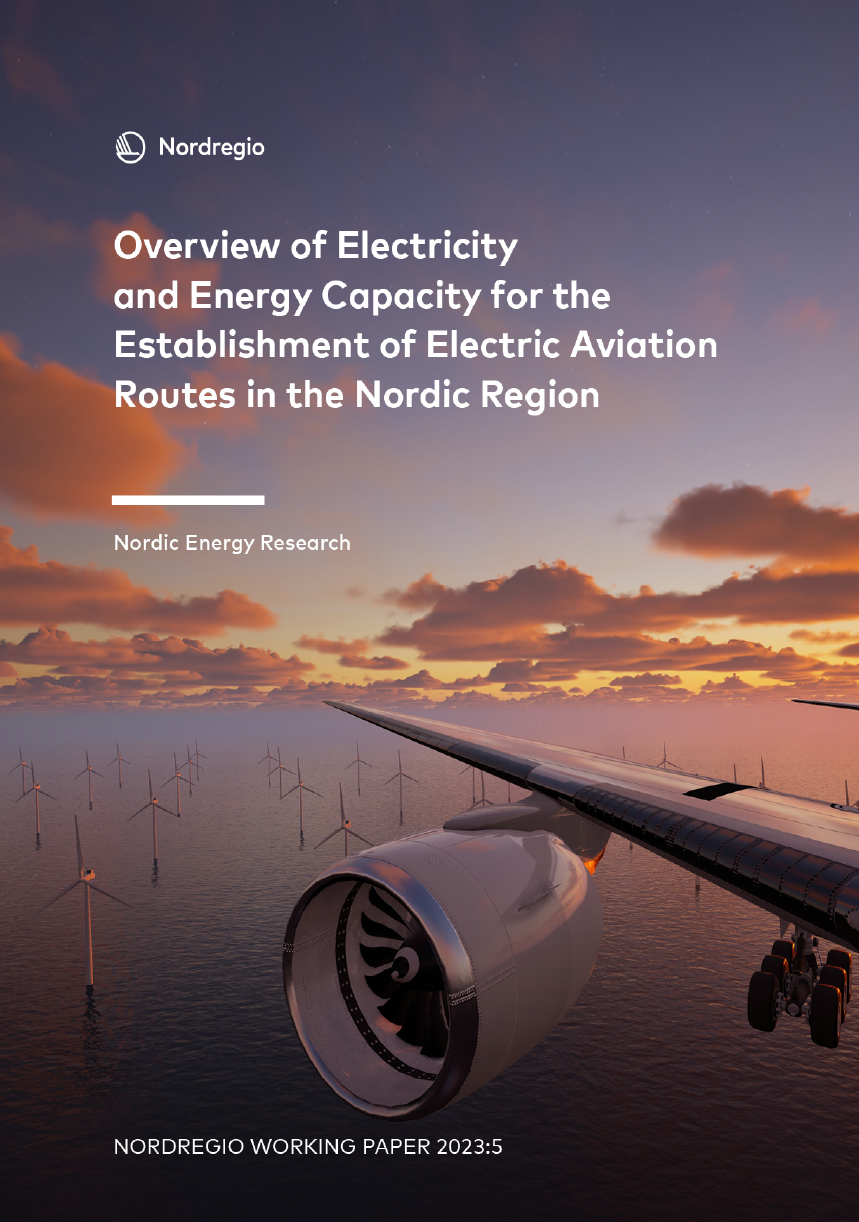This report explores which routes in the Nordic Region will be suitable for establishing electric aviation according to two factors: energy demands of airports and regional power adequacy. The report is part of the Nordregio project Electric aviation and the effects on the Nordic Regions and substantially builds on the project’s Accessibility study.
The Accessibility study identified 203 airports in the Nordic Region as feasible for accommodating electric aviation, on the basis of savings in transport time, connecting rural areas with urban or other rural areas, and overcoming cross-water distances or other geographical obstacles. It is impossible to clarify the energy capacity and infrastructure adequacy of all 203 airports within the scope of this report. Consequently, a regional perspective on the power adequacy is applied for the report assessments. This will assist in the selection of reasonable case studies, which will be explored in the next stages of this project, for the first generation of electric aviation in the Nordic Region.
It is important to emphasise that power conditions and connections of local distribution grids differ within regions, as does the energy demand of airports. Standard conditions of battery electric airplanes, power demands, and charging infrastructure are described in the following chapters, with an aim to understand requirements for power capacities and infrastructure to adequately support electric aviation.





